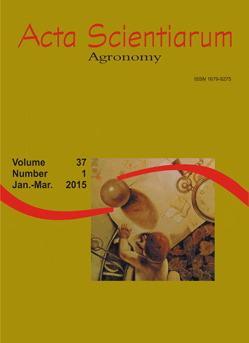<b>Effects on soil chemical attributes and cotton yield from ammonium sulfate and cover crops
Resumo
Fertilizer use in no-till systems must be aligned with a correct interpretation of soil chemical attributes and crop demands. The objectives of this work were evaluate the effects of pre-sowing application of ammonium sulfate (AS) and of cover crops on the yields and soil chemical attributes of no-till cotton (Gossypium hirsutum L. r. latifolium Hutch) over two harvesting years. The experiment was arranged in randomized complete block design, with the plots in strips, and the variables were three cover crops (Raphanus sativus L., Avena strigosa L. and Avena sativa L.) and four AS doses (0, 150, 300, and 450 kg ha-1) applied over millet dry biomass. The cotton in the experimental plots was manually harvested on April 25, 2007 and April 24, 2008. The soil samples were collected between cotton rows in all plots on May 5, 2007 and May 12, 2008, at depths of 0.0-0.05, 0.05-0.10, and 0.10-0.20 m for soil fertility analyses. The increasing doses of AS induced lower soil pH, and calcium (Ca) and magnesium (Mg) levels in the superficial soil layer, as well as higher exchangeable aluminum (Al) and sulfur (S) levels until a depth of0.20 m. Seed cotton yields increased with increasing AS doses.
Downloads
DECLARAÇÃO DE ORIGINALIDADE E DIREITOS AUTORAIS
Declaro que o presente artigo é original, não tendo sido submetido à publicação em qualquer outro periódico nacional ou internacional, quer seja em parte ou em sua totalidade.
Os direitos autorais pertencem exclusivamente aos autores. Os direitos de licenciamento utilizados pelo periódico é a licença Creative Commons Attribution 4.0 (CC BY 4.0): são permitidos o compartilhamento (cópia e distribuição do material em qualqer meio ou formato) e adaptação (remix, transformação e criação de material a partir do conteúdo assim licenciado para quaisquer fins, inclusive comerciais.
Recomenda-se a leitura desse link para maiores informações sobre o tema: fornecimento de créditos e referências de forma correta, entre outros detalhes cruciais para uso adequado do material licenciado.




















































